As I mentioned in the first post of this series, our first day in Iceland was one of the COLDEST days of my life. Coming from a girl raised in Chicago, I think that says a lot. Between the rain, the 40 mph wind getting soaking wet, and then having to walk for several hours, we were convinced we would end up with pneumonia before the trip was over. But, all in all, it was still a great day, and we were able to experience some of the most beautiful landscapes Iceland has to offer.
There is a reason, after all, that Iceland is one of the most incredible places in the world. If you are considering a trip to this magical country, you should definitely read our post Uncover the Joys of a One Week Family Adventure to Iceland.
After spending hours walking around, marveling at the views, we ended our first night by huddling in a cozy cafe with hot chocolate and wool blankets. We stayed there until late in the evening, talking and soaking up the atmosphere. It was one of those small moments that will stay with us for years. Despite being cold and wet, our first day in Iceland was a success! To learn more about incredible adventure travel experiences, check out the World’s Best Adventure Resorts article.
When we got back to the hotel Friday night and finally defrosted, we were terrified about the prospect of ever stepping outside again, not to mention our snorkel Silfra tour, which has one of the most consistently cold water temperatures in the world. Water freezes at 0 degrees Celsius, and Silfra is always 2-3 degrees celsius. As we anxiously researched what we had gotten ourselves into, we looked for blogs and articles to help us prepare. Most seemed to be written in the summer; the common theme was LAYERS, LAYERS, LAYERS.
When we woke up, our first task of the day was to choose the clothes we would be spending what most bloggers called the “coldest 4 hours of our lives” in. We started going through our belongings, laying them out one by one. The full list of what we wore and highly suggest you pack can be found below.
ABOUT SILFRA
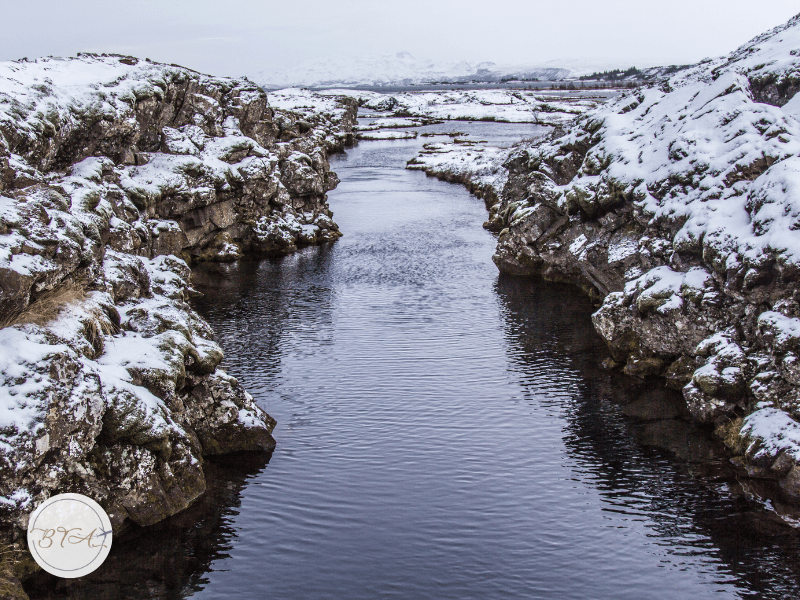
Silfra is located in Thingvellir National Park, a UNESCO World Heritage Site on the Golden Circle, where the two tectonic plates which separate Europe and North America are slowly drifting apart. It is a 200-meter-long fissure filled with crystal clear water from the nearby Langjökull glacier and is often described as “the purest place on Earth.” Uniquely situated between two continental plates, Silfra offers an unparalleled opportunity for divers to explore its underground beauty, ranging from magnificent underwater caverns to colorful coral reefs. It is rated as one of the top 10 dive sites in the world for the uniqueness of its location and the incredible visibility of up to 100 meters. The crystal clear glacier water becomes filtered by a volcanic rock over 30-100 years as it flows down from the glacier.
As promised, the water temperature that day was an icy two °C (35°F), so we needed to ensure we wore the appropriate clothing for snorkeling. We got an extra pair of gloves and a neoprene hood to stay warm.
Despite being cold, Silfra is a mesmerizing dive site. Although there are no fish in the water, the rock formations and colors are breathtaking and mesmerizing, drawing thousands of visitors annually. In fact, the marine life in Silfra mainly consists of algae and bright green “troll hair”. The dive and snorkel path follows the ridge from Grynningar shallows to Silfra Hall to the Kirkjan Cathedral, around the Sand slope into the Silfra Lagoon. Be prepared that while the tour is 2-3 hours, the actual time in the water is 35-40 minutes; believe us, that is enough!
Although there are tour options that provide transportation, Vanessa and I opted to rent a car for the day to visit both Silfra and the Secret Lagoon in one day. It was the best decision we could have made because, as we anticipated following a period of several hours when we were freezing cold, the 1-hour drive to the hot springs was well worth it! It’s also a beautiful, slightly intense drive from Reykjavik to the Golden Circle.
LOGISTICS – MEETING LOCATION AND ARRIVAL
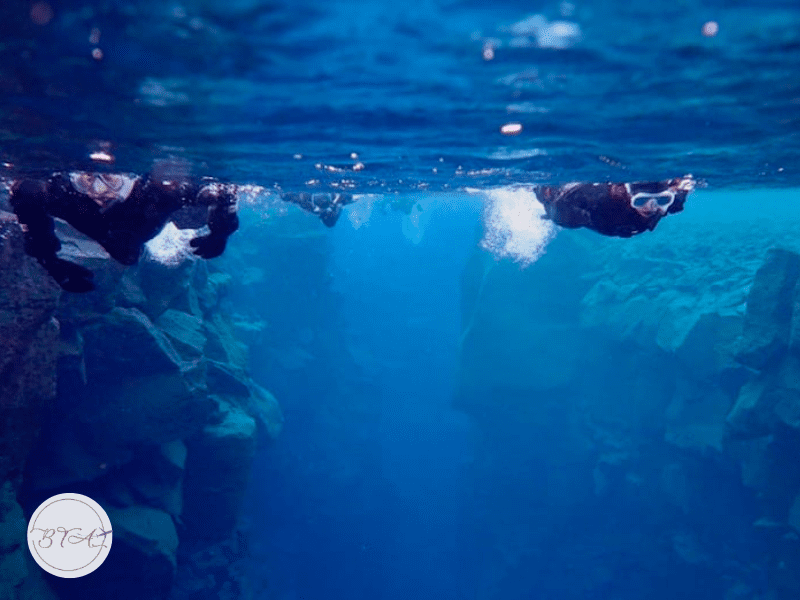
Pay close attention to the meeting point if you are doing a self-drive tour. Most tour operators meet at the parking lot by the Silfra dive site. We had mistakenly read that our meeting point was at the Information Center of Thingvellir and nearly missed our tour. We were taken onto the van and given a briefing when we arrived. The guide went over the history of Silfra, where we would be going, how long it would take and the safety precautions we needed to follow.
ALL DRESSED AND READY TO GO
We then exited the van and began the process of getting into our dry suits. If you are new to cold weather water activities, it is essential to understand the differences between a standard wet suit and dry suit. The primary difference between a wet suit and a dry suit is the way in which they prevent water entering the suit. A wet suit allows a small amount of water to enter the fabric while still providing thermal protection; this means it can be used for shallow snorkeling or diving in warmer temperatures. A dry suit, on the other hand, seals completely, preventing any water from seeping inside; this makes it ideal for colder water temperatures. Typically dry suits are recommended for use in water temperatures ranging from 39°F (4°C) to 59°F (15°C) Wet suits tend to be lighter and more flexible than dry suits, making them more comfortable to wear but also less protective from harsh environments. Dry suits provide greater insulation but are generally more expensive and heavier than wet suits.
When scuba diving or snorkeling with a dry suit, it is important to wear the right clothing underneath. Wool or fleece layers are great for insulation and wicking moisture away from your body. Always wear a long-sleeved shirt and pants made of non-cotton fabric to prevent chaffing and overheating. A thin layer of neoprene can also be worn under the dry suit for additional warmth; ensure these garments fit snugly and can insulate you even if you get wet from perspiration. Lastly, don’t forget about accessories such as gloves, hoods, and booties for extra protection underwater!
After our initial briefing we got to work getting dressed. Remember, the drysuit does not keep you warm, it keeps you dry, which is why the proper base layers are essential to prevent hypothermia. Putting on the dry suit was cumbersome, but the guides were helpful. After this process, which took over an hour, we walked to the landing area.
This is where I feel Dive.IS and the other tour operators could better organize their trips. Groups are separated into 5-6 people, each waiting for the other to pass a certain point before entering the water. Dive.IS had two tour times at 10 AM and 1 PM. Since there were many 1 PM groups, we had to wait on the landing for around 30 minutes before we could enter the water, which made us very cold before we even began snorkeling. It would be much more convenient to space them out in 30-minute increments. Regardless of when it was finally our turn, and we got into the water, it was one of the most surreal experiences of my life.
SILFRA SNORKELING
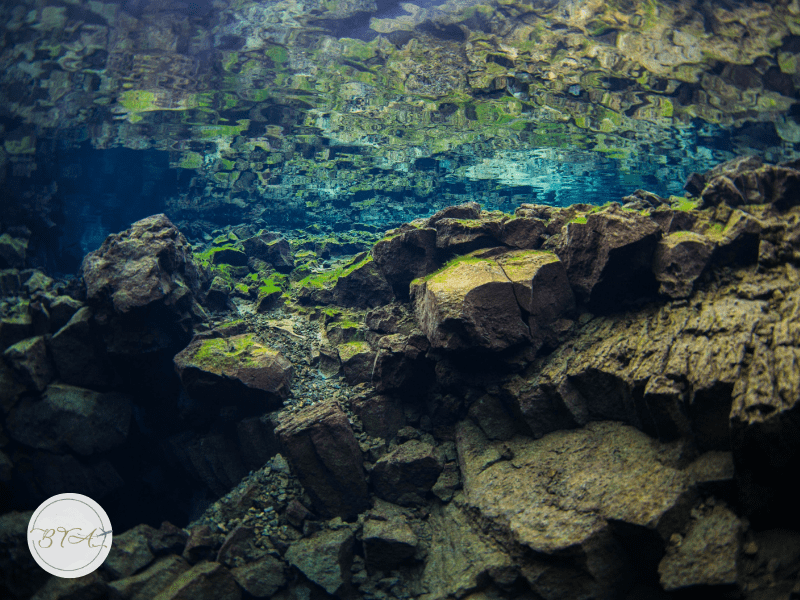
I did not feel the cold (as the outside temperature was colder than the water temperature) until I put my face and hands in. The initial rush of cold water into the gloves feels like picking up large ice cubes with your bare hands and squeezing them tightly. After several seconds, however, the water begins to warm in the gloves, the lips go numb, and the face gets accustomed to the temperature.
This is why it’s essential not to wave your hands around but to keep them directly in front of you or at your sides. The water was crystal clear, and the colors danced in the light, changing to shades of blue. The visibility was incredible, and the rock formations created when the plates shifted and the continents separated were the stuff of legends.
I’m so glad I decided to take a GoPro with me and document this experience, as otherwise, I would have never been able to enjoy it again. Nothing beats the feeling of diving in deep and seeing these wonders first-hand. The entire time underwater felt like I was living in an adventure movie!
THE LONG WALK BACK
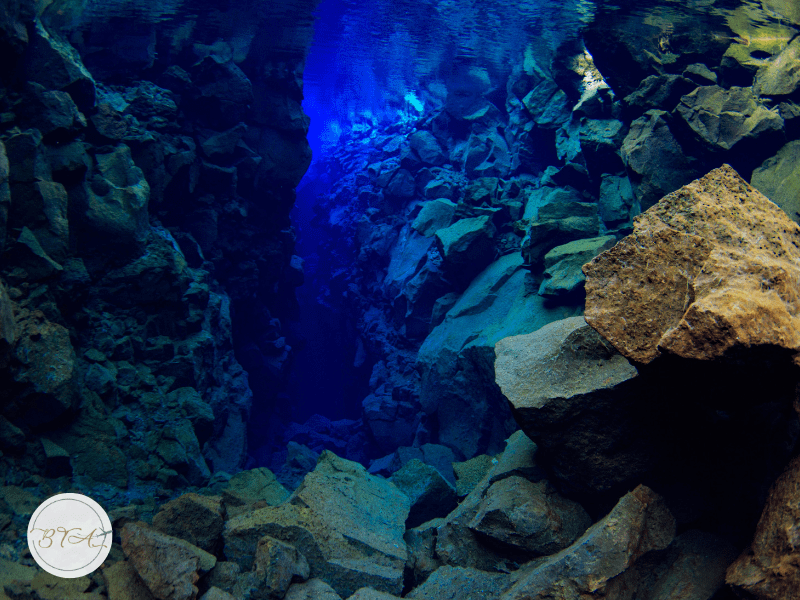
Yes, it was extremely cold, and by the time we exited the water, I could not feel my fingers, face, ears or toes. This is why you must layer and have appropriate clothing under the dry suit. We left the water right as the sky turned dark and it began to hail, yes HAIL and made the 10-15 minute walk back to the parking lot.
This walk was excruciating, and the pain in my hands was a combination of feeling like they were being set on fire and dipped in frozen water. We made it back and had to proceed with the coldest portion of the entire tour, which involved removing the gloves, dry suit and warm suit, all done outside. When my hands became exposed to the cold, it felt like being stabbed with hundreds of needles, alternating between numbness and tingling and complete loss of feeling. The guides handed us hot chocolate and herded us into the van, where I immediately put on my jacket, boots, hat and gloves.
I looked around the van, and Vanessa looked on the verge of tears. Her hands were bright red, swollen and extremely painful as she tried to bring the hot chocolate to her lips shakily. The lady next to her was shaking uncontrollably. She had not put on enough layers and had moved her hands around underwater a bit too much. I checked on her, but she could talk; I put on her gloves, and once she drank a few cups of hot liquid, she started to perk up.
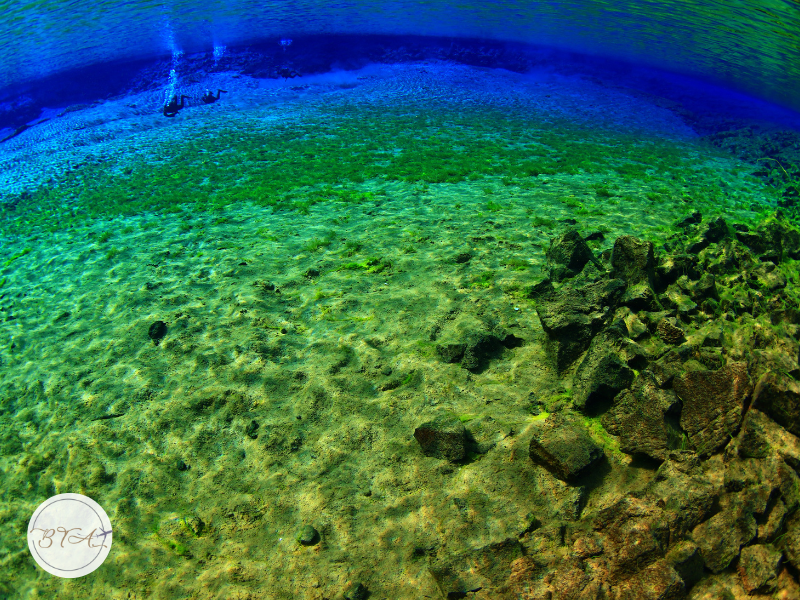
It is difficult to relay the simultaneous emotions of being exorbitantly cold yet exhilarated. Studies have shown that taking a dip in cold water is an exhilarating experience that can leave you feeling refreshed and energized. Whether jumping into a freezing lake or taking a break from the summer heat in an icy swim pool, immersing yourself in cold water gives you a rush of adrenaline and invigorates your body and mind.
The shock of coldness also helps stimulate circulation and oxygenation, improving overall health. Cold-water swimming is also said to help reduce stress levels and improve mental well-being. However, staying safe while engaging in this activity is essential by taking proper safety precautions before entering the water. Snorkeling or diving in Silfra is an extreme form of that experience.
By the time we got to the car, which was another 10-minute walk and turned up the heat, Vanessa and I were laughing in a slightly mad way. Had we succeeded in doing this insane activity?! When we finally warmed up and had enough oxygen returned to our brains to debrief, we agreed it was a life-changing experience. We felt alive, empowered and able to overcome whatever challenges came our way. It was one of the most physically demanding yet spiritually rewarding experiences ever. Would I want to go back in that water? Probably Not. But would I do it over again? Absolutely!
Secret Lagoon in Fludir
This is why I travel. To change, take on new challenges, become stronger and fiercer, and embrace the unknown. It proved to me that so many things in our lives are a matter of mindset. We were determined to snorkel in Silfra, no matter how cold or crazy it seemed, and I am so glad we did!
After leaving Silfra, we drove to the Secret Lagoon in Fludir. Although not so “secret,” it was much quieter and less pretentious than the Blue Lagoon, which we experienced later. The drive took approximately 1 hour, and we were lucky to have clear weather. Although I learned to drive in Chicago and spent 10 years driving in poor weather, I would not have wanted to drive in the snow or rain of Iceland. The roads are curvy, there are no street lights, the weather changes incredibly quickly, and there are many potholes.
We had booked our tickets for the secret lagoon in advance because, like all tours in Iceland, there are more visitors than spots. Iceland does not seem to have a “low” season, as people come year-round hoping to see the glorious natural wonders of each season. We arrived, waited in line for approximately 3 minutes, purchased a cider and proceeded to the locker rooms. There are very strict rules for those of you who have not been to Iceland or done the traditional bath experience.
Bath House Rules In Iceland:
You must remove all your clothes (and bathing suit) and shower fully naked before being allowed in the hot springs. That does not mean you bathe in the nude; it simply means they want you to be completely clean before getting in the water. This keeps the geothermal water hygienic. The secret lagoon was moderately crowded, but we had plenty of space to spread out.
TIP: Bring shampoo, conditioner and towels. The shower does provide body wash, and one towel can be rented, but you will want to use it after you exit the lagoon and will not want to dry off with the same towel after showering.
WHAT TO PACK FOR SNORKELING SILFRA
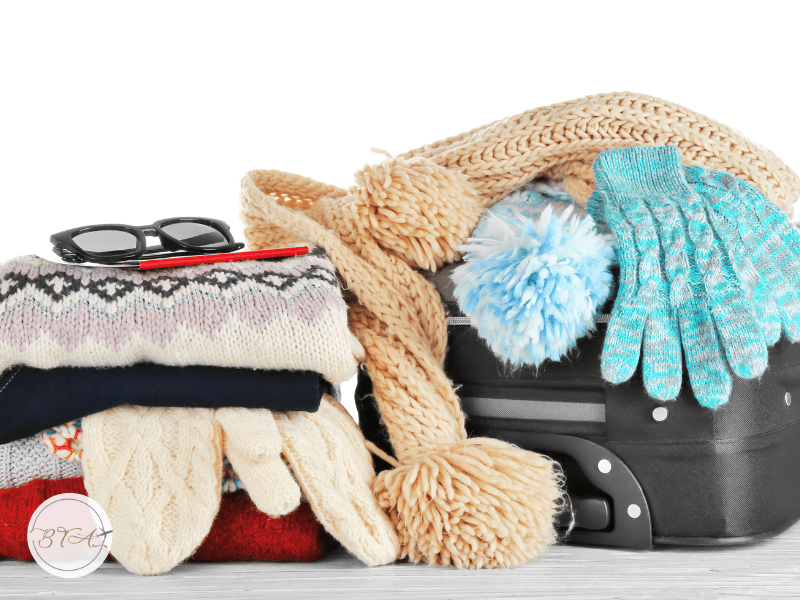
When packing for a snorkeling adventure in Silfra, Iceland, here’s a list of essential items to remember, but ask your outfitter which items they may already provide.
- Warm thermal underwear to wear under your suit. Look for clothes made from materials that insulate even when wet.This includes polypropylene, wool, and pile fleece, but not cotton.
- Wool socks.
- A dry suit: It is important to keep as warm and as dry as possible, so make sure to bring a quality dry suit that fits your body correctly. However, if you don’t already own one, most outfitters typically provide dry suits.
- Neoprene booties with rubber sole: This will help you stay warm and provide traction when walking. Again, these are typically provided if you don’t have your own set.
- Gloves: Make sure you have appropriate gloves for the weather and provide protection against abrasions. Consider wearing poggies and gloves.
- A hood: A wetsuit or drysuit hood can help keep your head warm while snorkeling in Silfra’s cold waters.
- Goggles: Make sure to bring a pair of goggles as visibility underwater is limited, making your snorkeling experience much more enjoyable.
- A snorkel: Bring a quality snorkel that fits you comfortably and is designed for the type of snorkeling you will be doing. We recommend bringing your own.
- Dry bag: Have a waterproof, airtight bag to store your belongings when not in use.
- Beach towel and/or blanket: Bring a large beach towel and/or blanket to warm up after your snorkeling adventure.
- Sunscreen: Protect yourself from the sun’s rays with a water-resistant SPF 30 or higher sunscreen. Even during the winter, the suns rays can be quite strong and cause sun-burn.
- A change of clothes: Have a change of clothes in case you get wet or want extra layers for warmth.
- Water Bottle: Bring a reusable water bottle with you for hydration.
- Snacks: Pack some snacks if you get hungry after your snorkeling trip.
- First Aid Kit: Take a first aid kit just in case of accidents or emergencies.
- Fins or Flippers: Make sure to bring your own fins or flippers if you have them.
—
Boutique Travel Advisors is a full-service, luxury travel agency. We specialize in creating bespoke itineraries for discerning clients around the world. Please visit our website or call 480-787-1477 to speak with a dedicated travel expert.
Are you planning an international or domestic trip? Check out our other articles to help you come prepared!
We highly recommend the purchase of travel insurance to protect your financial investment and health while traveling internationally. To purchase a policy with our preferred travel insurance company Arch RoamRight click here.
If you would like assistance purchasing a travel insurance policy, please get in touch with a BTA advisor.



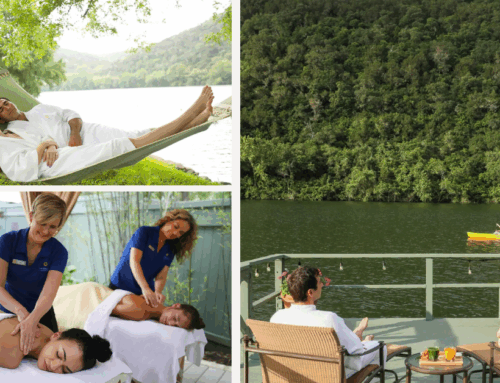
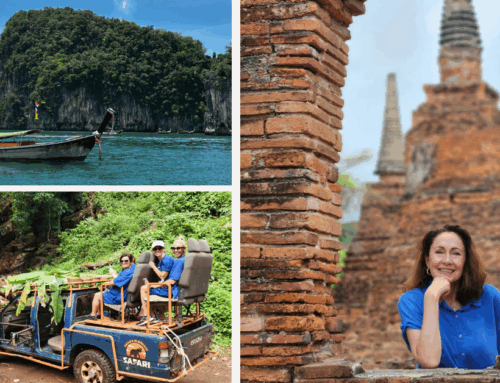




Leave A Comment